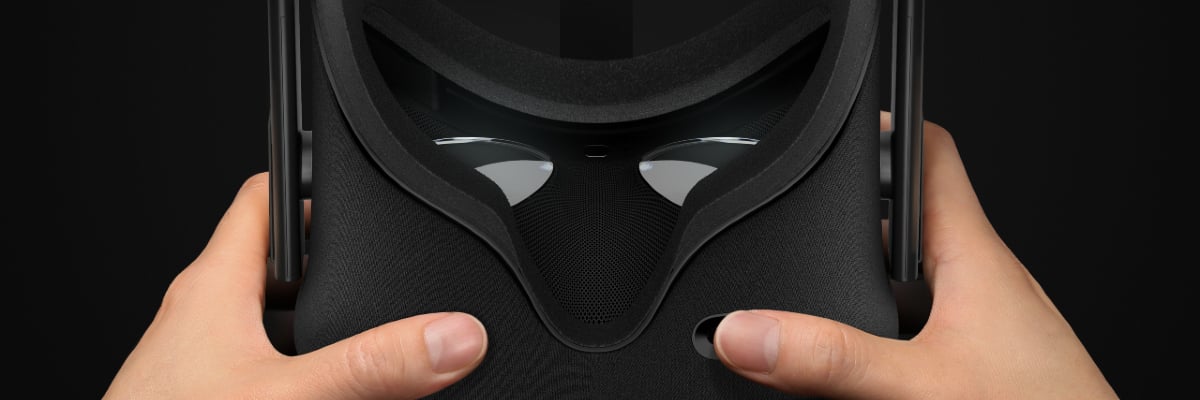
By Ross Bohner
Virtual reality (VR) systems have been in use since the 1960s for a variety of purposes including training, simulation, research, and entertainment. Various militaries and academic institutions have invested significantly in virtual reality systems for more than two decades and are now used for applications ranging from pilot training to logistics management.
It’s easy to see the allure: Virtual reality’s intent is creation of simulated environments indistinguishable from reality. VR applications can simulate difficult and extreme environments for users. Examples of these include burning buildings for firefighters, the International Space Station for astronauts, combat for military, hostage situations for police, etc. Virtual reality allows training within these situations without exposing users to the inherent risks of the extreme environments.
What’s the buzz about?
In the past VR was limited to academic research, military, or corporate research and development. This was due to the immaturity of technology that set the foundation of VR: sensors, graphical processing, and display technology, which kept the cost of required hardware out of the hands of the public. That is now changing as we have reached the technological maturation point where VR-enabling hardware is becoming affordable for general use.
Many leaders in tech industries are now investing multiple billions of dollars into bringing consumer-level VR to market. Facebook bought Oculus, a forerunner for consumer-level head-mounted display (HMD) hardware. Samsung, HTC, Microsoft, and Google are also investing heavily.
What makes up VR?
Virtual reality refers to the simulated 3D environments often rendered using a stereoscopic HMD and integrates additional apparatus for interacting with the virtual world. The basic components of Virtual Reality applications include
- Simulated full or partial 3D environments
- Stereoscopic displays allowing users to view the virtual world in 3D
- Sensor tracking for user movement and input
Yet, virtual reality applications today vary as much as the devices used within the systems.
Current experiences
The central experience of virtual reality is the feeling of presence, where users feel immersed within the experience and intuitively behave and interact naturally with the simulated environment as they would the real world.
The first point of immersion for most users in VR environments is the viewing of a virtual world through a stereoscopic head mounted display with positional tracking enabled. When using such a device, users turning their head have their view of the simulated environment realigned appropriate to their head position. This provides an immediate feeling of immersion, so long as the simulated world’s orientation is consistent with the natural world, the rendering of the simulated world frame rate is acceptably high, and the tracking is a high enough fidelity.
The quality of VR experience is ultimately based on the combination of hardware and software running the experience and the first generation consumer-level systems will leave much to be desired. The experience of Oculus Rift, one of the more popular consumer-grade VR HMD system currently in development, is not as high quality as an institutional VR lab setup. It has a much lower resolution, effectively 1080×1200, max frame rate near 75 frames per second, spherical lens displays, and a directional head tracking system.
After some effort of fitting the device to your head, virtual worlds viewed through the Rift are notably pixelated and turning your head past 90 degrees to the head tracking sensor often causes positional tracking errors. However even with the current limitations the experience can be transformative for users of many applications.
Investments in UX
Up to now the experience with consumer-grade VR has been novel yet lacking in overall quality. But the currently proposed price point and level of investment is ensuring a tremendous amount of content is being developed, some of which may create truly valuable experiences.
It is these special experiences that will ultimately drive the sales of VR system units, which in turn will be the catalyst for fast evolution of the hardware. As the technology improves we will see VR adapted across all industries in innovative ways. Much like the proliferation of mobile devices across the business landscape, VR will provide opportunities for new interface design, human-computer interaction models, and design thinking for brands looking to innovate in their industries. Imagine:
- Using VR to explore a first-class private luxury suite for a high-end cruise prior to purchasing.
- Walking through a piece of prime real estate in a hot market halfway around the globe.
- Experiencing truly immersive video entertainment content in a shared setting or the privacy of your own home.
- Overcoming your fears and phobias using effective non-threatening immersion therapy.
What else could you do with VR?
As the varied applications for VR become possible and the hardware more accessible, we’ll see a heavier investment in the technology from multiple industries and stakeholders. In order to see wider adoption, VR hardware and application makers must ensure their products are wearable, affordable, portable and most of all, usable. Getting the end user experience right will be the key differentiator for those who wish to thrive in this brave new world.
Ross is passionate about user experience in all forms and adapting emerging technologies to meet latent user needs. He has over 10 years’ experience in converting loosely defined concepts into exceptional interactive software and thrives in situations with high levels of uncertainty that require innovative problem solving and creation of novel prototypes to explore product value assumptions. He has a degree in Computer Science from the University of Northern Iowa, a Masters in Human Computer Interaction from Iowa State and a Masters in Human-Centered Design from the University of Washington. His past work extends across a variety of software domains including web applications, 3D animated films, virtual reality, and video games.
